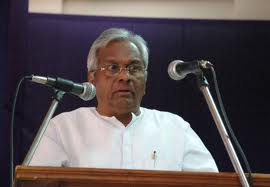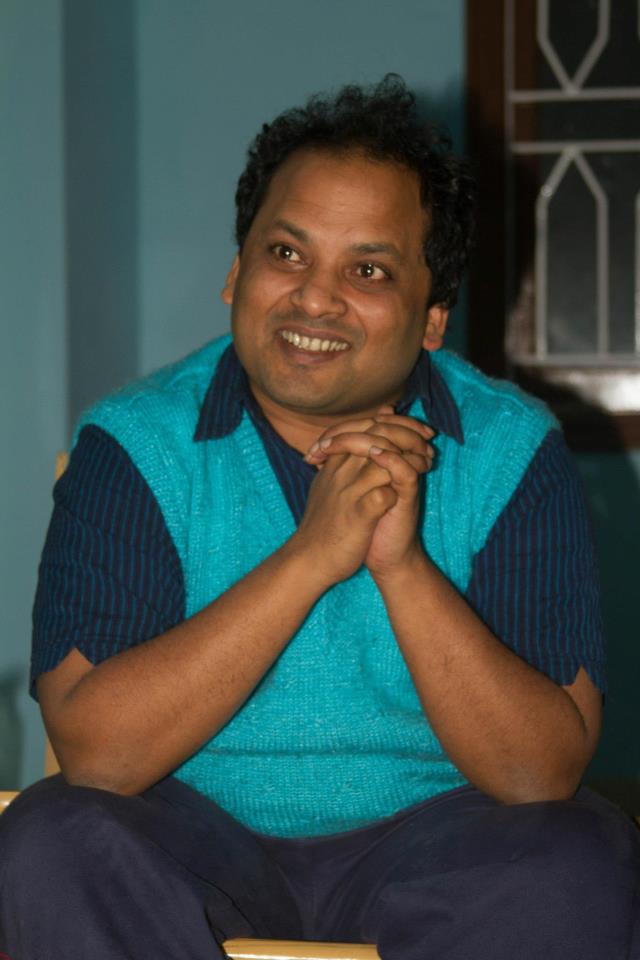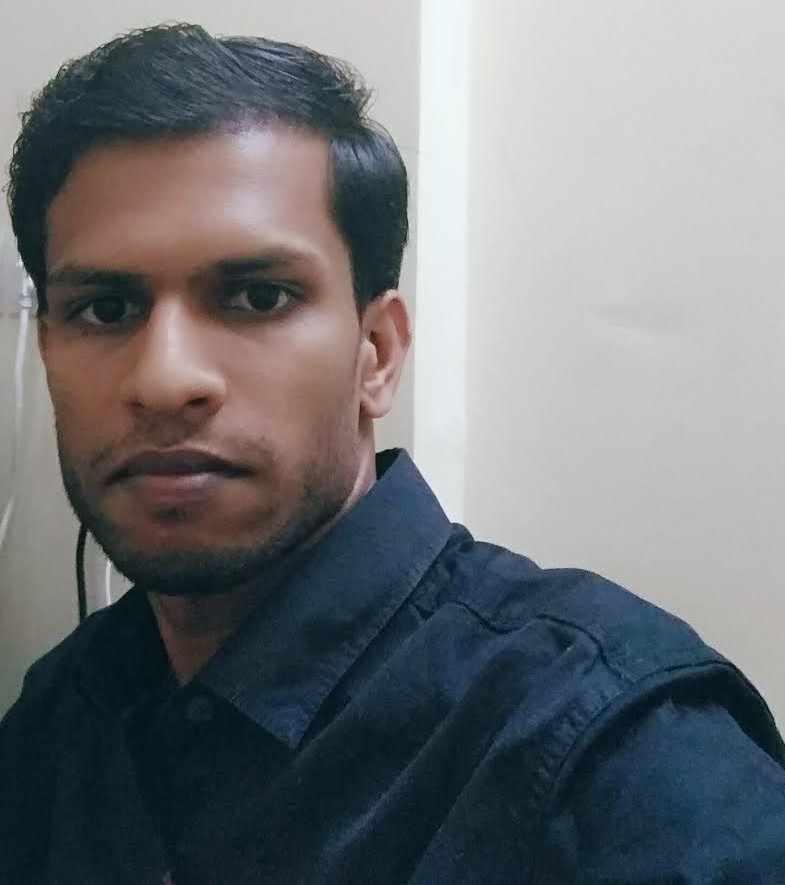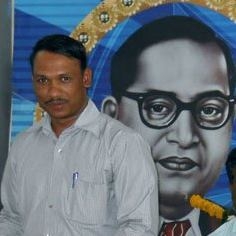~ Understanding the significance of Jati identity in selected prose writings of V.T. Rajshekar ~
Grishma Manikrao Khobragade

Abstract
Dalit-Bahujan-Ambedkarite writers have come to the fore of literary studies and culture studies in the recent years. These writers reveal in their writings various factors that propel actions like caste hegemony, caste discrimination and caste apartheid. Their writings also address the themes like self-expression, and search for identity. These writers represent the sentiments and issues of Dalits in India, about 85% of the population in India and many more in other parts of the globe. Indian writers of Dalit ethnicity also form a peculiar majority who articulate experiences of marginalization despite being the ethnic majority in India.
This paper is an attempt to look closely at one prose work of V.T. Rajshekar, Aggression on Indian Culture to see how the writer mobilizes his languages and social analysis to locate the instances of upper caste hegemony and apartheid in the form of untouchability and casteism respectively. Attempts are here made to find out how Rajshekar attacks both upper caste hegemony and caste based discrimination in domains such as society, politics, cultural, religion and law. Rajshekar, in these selected prose work which is a collection of his essays, interviews and reflections, tries to show that in Indian context, caste is the common denominator or the base structure on which the super structures like politics, law, religion and social institution are built up. Readers find that Rajshekar is attacking this very base of Indian society to show how the related aspects such as religion, morality, social values and media are lopsided or biased.
The proposed research paper makes an attempt to investigate selected prose writings of V.T.Rajshekar to understand his protest against the Brahminical social order and dominant castes in India. The study also focuses on the link between his prose writing and his continuous negotiation of Dalit identity against the backdrop of cultural, political and economic hegemonies. The basic task of the research is to identify the axes and the locations of cultural identity of Dalit and protest that the writer generates to negotiate the experiences of caste hatred, exploitation, violence and discrimination. The study leads to the interdisciplinary stance.
(Key words: caste hegemony, caste apartheid, Dalit nationality, Dalit ethnicity)
In Indian literature, Dalit literature is probably the first literature after Independence, which dared to revolt against the inhuman system of social exclusion and untouchability practiced for ages in India. However, what made it different was its method of protest and revolt. Dalit writers adopted literature as a mode of expression for their social revolt. Their writings were not only unique but also a befitting reply to the subtle mechanisms deployed by the Brahminical class to keep the downtrodden out of the mainstream. Literature was, in ancient days, considered a privilege reserved for the upper castes, especially the Brahmins, whereas, Dalits were not even allowed to get education. It is in this context that that the adoption of revolt and protest writing by Dalit writers as a method of social protest assumes special importance.
In India, Dr. Babasaheb Ambedkar was immensely successful in using prose essays in bringing out the Dalit protest, Dalit identity and Dalit outcry against caste hegemony and apartheid. Rajshekar is another significant writer who has used prose writings as a medium to resist these oppressive social agencies. This research is an attempt to read closely his prose writings to see how effectively he depicts caste hegemony and apartheid and also to show how he has used a distinct prose style to hit directly at these social evils.
Rajshekar’s thoughts and writings are very famous and he has written books on history, economics, politics, sociology, Marxism, Buddhism, Islam, Christianity, International politics, Zionism, Sikhism, Brahminism and his most favorite theme has been Caste. Born and brought up in the west coast district of South Kanara, Karnataka in 1932, he joined Deccan Herald (1959), leading English daily of Bangalore, after his graduation. Then he migrated to Bombay and joined the Indian Express. He also served as a Marxist party worker. As he was not born in Dalit family, but belonged to a Backward Caste, he was not a direct victim of untouchability. He worked in a cotton textile mill in Mumbai for a year which made him a witness of oppression of mill workers and then he realized the need for class struggle.
He started Dalit Voice as a mission which became successful and internationally acclaimed. Rajshekar has written many books (over 100) which were translated into different languages in India and abroad. He has written books which deal with different, independent subjects of significance to the oppressed people of India. One book ‘Caste – A Nation within the Nation‘ got him the LISA (headed by Brig. Usman Khalid of Pakistan) International Award in London.
 The work of Rajshekar taken up in this analysis is Caste – A Nation within the Nation. This is a collection of essays which addresses various issues of casteism. It also highlights the identity politics inherent in castes and sub-castes. Besides, the essays in this collection point out the significance of resistive ethnic identity in the wake of globalization.
The work of Rajshekar taken up in this analysis is Caste – A Nation within the Nation. This is a collection of essays which addresses various issues of casteism. It also highlights the identity politics inherent in castes and sub-castes. Besides, the essays in this collection point out the significance of resistive ethnic identity in the wake of globalization.
Rajshekar begins the book with the statement that caste is still an uneasy topic in India though casteism is practiced in all the social institutions. He points out that one will have to examine the institution of marriage to see how deep rooted is casteism in India. He indicates that the matrimonial columns found in the newspapers are very clearly casteist and they resist assimilation of castes which should logically happen in a democracy. Rajshekar declares that the thesis statement of this book is to arrive at a realistic definition of nationality. He argues that the available definitions of nationality are inadequate as they fail to take into account the impact of caste system and ethnic identity. He also points out, at this stage, distinction between caste system and ethnic identity:
Caste system may be anti-democratic and casteism may be racism but not the ethnic identities of the Indian tribes which are mistakenly described as caste. (CNWN: viii)
Rajshekar is of the opinion that caste hegemony and caste apartheid could be tackled only in a socio-political way. He observes that in a democracy, political power, the control of institutions, is the basic need to make social changes. He prescribes a political solution for the backward castes by suggesting how electoral reforms and the presence in social institutions can help Dalits:
Once the BCs become caste conscious, they will identify their real enemies and join hands with Dalits. A Bahujan Samaj will then be formed. Backward Castes may get political power. That may not be difficult. But until they take over the bureaucracy, banking, media and educational institutions, mere political power is of no use. (CNWN: x)
Rajshekar also attacks the anti-caste campaign which is very popular in India. He argues that caste has been all-time reality and one cannot get rid off casteism merely with the help of rhetoric of the anti-caste campaign. He explains:
Caste has survived in spite of more than 50 years of anti-caste campaign. In fact, it is going strong. Upper castes led by Brahmins are the most vociferous advocates of a ‘casteless society’ and also bitter critics of the caste system. But they do not say how to abolish the caste system. They are convinced that the caste system is another word for their Hindu religion, and abolition of the caste system will result in the destruction of Hinduism, for which they are not prepared. (CNWN: x)
Rajshekar points out that an understanding of a nation without the understanding of its castes and sub-castes is basically incomplete. He argues that people do not even understand that Indian society is not a homogeneous society but a collection of castes and communities. Hence, he says that one will have to know that India has nearly 2800 castes including 450 scheduled castes, 461 scheduled tribes and 766 backward castes. He suggests that this figure indicates that caste continues to be the foundation of Indian society though it is rarely represented in national discourses.
According to Rajshekar, caste system is the brain child of upper caste hegemony which had generated rigid social classification which eventually created a structure that could give rise to conflicts. He looks at the caste system primarily as a site of class conflict. He explains:
We now come to the question of ‘caste annihilation’. If the Scheduled Castes, Scheduled Tribes, Backward Castes, Muslims, Christians, Sikhs, and others who together are now popularly known as Bahujan, are the oppressed slave-castes and the Brahmins, Banias, Thakurs, etc., are the Hindus – the oppressors and the ruling castes – there is bound to be a conflict of interests between the rulers and the ruled. (CNWN: 3)
Rajshekar also dismisses the word ‘Caste’ and prefers the word ‘Jati‘ which seems to be more appropriate in the Indian context. He locates jati as a shaping factor in marriage, a social institution. He indicates that marriage as an institution has been largely responsible for perpetuating caste hegemony. He remembers Dr. Ambedkar on this point:
According to Dr. Babsaheb Ambedkar, it is mainly the custom of endogamy that has preserved the castes and prevented one caste from fusing into another. Almost all the writers and scholars conform to this view of Dr. Babsaheb Ambedkar. (CNWN: 4)
A similar view to that of Rajshekar was also held by Dr. Ambedkar who had clearly identified casteism as a Brahmin conspiracy and a result of rigid endogamy. It is worth quoting Dr. Ambedkar here to illustrate the similarity:
The thing that is most imitated is the most superior one of those that are nearest…The Brahmin is a semi-god and very nearly a demi-god. He sets up a mode and moulds the rest. His prestige is unquestionable and is the fountainhead of bliss and good … He is believed to be the very end of creation. Such a creature is worthy of more than mere imitation, but at least of imitation and if he lives in an endogamous enclosure, should not the rest follow his example? (Ghurye: 1996:19)
Like Dr. Ambedkar, Rajshekar also argues that caste cannot be annihilated unless the social institutions are restructured. He argues that the Hindu propaganda for anti-caste movement is a farce because the so called ‘Socialist Brahmins’ do not really want to end racism and endogamy. He argues:
Our problem is with the dishonest vaidiks who describe themselves as Gandhians, socialists, communists, nationalists, naxalites, etc. It is these ‘Socialist Brahmins’ who talk about ‘caste annihilation’. When they propagate ‘caste annihilation’, do they also want the destruction of the characteristics of the caste system such as racism, endogamy, touch-me-notism, the concept of pollution and the superiority feeling among the upper castes? ( CNWN: 10)
Rajshekar also observes that caste system is also a stratified power structure in which all social changes are very cosmetic because these social movements do not really alter the positions of the powerful/dominant castes. Hence, he maintains that socialism in India has only made external changes in the caste system without truly changing the social order:
These ‘Socialist Brahmins’ want to destroy only the external characteristics of the caste system without affecting it materially. They want to change the form without changing the content. They want to ’embrace’ the Bahujan as equals without offering to share their monopoly over the power and privileges of the Brahminical Social Order. They want to take Harijans (Untouchables) to Hindu temples, but will not tolerate Harijans demanding priesthood. (CNWN: 11)
Rajshekar’s analysis of the relationship between caste and power is similar to that of Dr. Ambedkar who had identified Hinduism as a Brahminical religion with its own clear power politics. Dr. Ambedkar had observed:
The root of untouchability is the caste system; the root of the caste system is religion attached to varnashram; and the root of varnashram is the Brahminical religion; and the root of the Brahminical religion is authoritarianism or political power. (Dr. Ambedkar; 1980:30)
Rajshekar also points out that the Bahujans have been enlightened by Dr. Ambedkar and that they believe that they need political power to counter the adverse power of casteism. Dr. Ambedkar had pointed out that untouchability should be taken as a site of resistance by Dalits to acquire political power. He had maintained:
It must not be forgotten that there is a real conflict of interests between the Hindus and the Untouchables and that while reason may mitigate the conflict it can never obviate the necessity of such a conflict. What makes one’s interest dominant over another is power. That being so, power is needed to destroy power. (Dr. Ambedkar; 1980:30)
Rajshekar is in favour of caste identity and he argues that only by strengthening castes, Brahminism can be attacked. He also argues that this was the very agenda of Dr. Ambedkar who had pointed out that more than castes, Hindu religion is harmful. Rajshekar reminds that Hindu caste system and not the caste is truly dangerous.
Rajshekar explains how Buddhism tried to compensate the lives of Dalits by providing them with sacred places for worship. He also argues that Buddhism and Dr. Ambedkar helped Dalits in consolidating their jati identity. He observes:
Babasaheb has shown us the way to Buddhism. Dalits, in particular, can have their own religious (Buddhist) mutts presided over by a swami or monk. It is not possible to have one single mutt for the whole Dalits community which is also not a homogenous community. Each caste and sub-caste can have its own mutt presided over by a respected leader of that jati which is well-versed in Buddhism. (CNWN: 23)
 Nationalist discourse, according to Rajshekar, is controlled by the Brahminical Social Order. According to him, nationalism is a strategy used by the Brahmins to divert the attention of Bahujans. If nationalism is a part of one’s identity defining one’s fellowship to kith and kin, it is a matter of ties of kinship. In this regard, Rajshekar believes that caste comes closest to this definition of nation. He argues that the notion of the nation cannot be confined to a territory but rather to the patterns of kinship and fellowship. Hence, he believes that India is a country of several nations with several kinship patterns emerging out of different caste identities of the untouchables. Dr. Ambedkar had also defended such a caste-based movement and identity of the untouchables. He had made an attempt to deconstruct the idea of nation from the perspective of different caste based communities:
Nationalist discourse, according to Rajshekar, is controlled by the Brahminical Social Order. According to him, nationalism is a strategy used by the Brahmins to divert the attention of Bahujans. If nationalism is a part of one’s identity defining one’s fellowship to kith and kin, it is a matter of ties of kinship. In this regard, Rajshekar believes that caste comes closest to this definition of nation. He argues that the notion of the nation cannot be confined to a territory but rather to the patterns of kinship and fellowship. Hence, he believes that India is a country of several nations with several kinship patterns emerging out of different caste identities of the untouchables. Dr. Ambedkar had also defended such a caste-based movement and identity of the untouchables. He had made an attempt to deconstruct the idea of nation from the perspective of different caste based communities:
First of all, there is no nation of Indians in the real sense of the word. The nation does not exist, is to be created, and I think it will be admitted that the suppression of a distinct and a separate community is not the method of creating a nation. (Dr. Ambedkar: 1944:168)
Rajshekar argues that exploitation and male domination are the curses of Hindu society which are absent in tribal societies. Hence he believes that the caste consolidation on the basic of pre-Aryan communities can bring equality in India. He argues:
Caste consciousness and consolidation will take our Bahujan castes back to those happy, contented pre-Aryan tribal societies where every caste (tribe) is equal to the other. (CNWN: 31)
Defending the caste identity, Rajshekar evokes ‘the salad bowl’ metaphor which is used to describe the multicultural, multi-racial American society. He indicates that Indian society is also similar with the caste identities making up the ingredients of a salad. He says that only Brahmins are against Dalits’ assertion of their Jati.
Sukhdev Singh Janagal, in his work ‘Caste–Class Struggle’ provides a similar argument. He observes that the emancipation of Dalits should begin with their sense of pride in their caste identity. He explains:
Feeling of inferiority complex is a great barrier to the emancipation of Dalits. Dalits must have self-reliance and self-determination. Dalits must understand what they want to build. If they want to build a movement for acquiring power in India, they must be clear that their movement must be of the size of India. (Janagal: 2009:180)
According to Rajshekar, many Bahujans are the victims of sanskritization, that is, mindless imitation of Brahmins. He observes that Bahujans imitate the evil practices such as dowry and male domination. He reminds readers that there was no dowry system among tribals and it is a predominantly Brahminical practice to enslave women. Rajshekar also aligns patriarchy with Brahminism and argues that Bahujans had a matriarchal society with lineage from female deities. He maintains that it is an effect of sanskritization that Bahujan replaced female deities with male gods and subsequently, started treating women badly.
Rajshekar also points out how religion relegates Bahujans as the negative ‘other’ of Brahmins. He argues that Hinduism, which is largely a conspiracy of Aryans, has forced Dalits to worship their Gods and to give up their tribal deities. This, according to Rajshekar, is a kind of cultural hegemony.
Rajshekar also has problems with the hegemonic notion of nation. According to him, India cannot be socialist nation but a nation of many nations. He argues:
India is not a ‘nation’ but every effort has to be made to forge the multinational India into a socialist nation. This effort can succeed only if our oppressors realise the fact that ‘caste is ‘class’ in India and these competing castes will clash in a ‘caste war’ which alone can lead to the establishment of a ‘socialist nation’ of our dream. (CNWN: 54)
Rajshekar also tries to expose the consequence of Privatization, Globalization and Urbanization. According to him, urbanization creates an economy that favors upper caste life, forcing the Bahujans to live in subhuman conditions. He indicates that the false face of Urbanization has to be exposed if India has to progress in true sense.
Rajshekar’s argument that Hinduism cannot provide a political identity or national identity for all the communities is similar to the view of Romila Thapar. Thapar explains that Hinduism has foundations in Brahminism and hence, it cannot be viable model for political identity. She says:
The call to unite under Hinduism as a political identity is if anything, anachronistic. Social and economic inequality whether one disapproves of it or condones it, was foundational to Brahmanism. To propagate the texts associated with this view and yet insist that it is an egalitarian philosophy is hardly acceptable. (Thapar: 2010:26)
Rajshekar argues that sociologists in India talk about class struggle whereas what India is witnessing, is a caste struggle. He observes that the study of social classes in India is misleading if it cannot take into account the factor of caste and ethnicity. He also talks about the political reason for identifying the caste struggle. According to him, caste is the only stable factor that determines nationality and ethnicity.
Rajshekar’s interesting and controversial work, Caste – A Nation within the Nation, also has two annexures which amplify his caste consolidation theory. In these annexures, Rajshekar insists that there is a need to go back to the tribal identities and to reject humiliating terms such as Shudras, if Dalits and Bahujans have to progress. He also maintains that Dalits will have to take pride in their identities as the Moolbharati and should go back to their original tribal names such as Yadava, Madiga, Kurmi, Mahar, Paswan, Chamar etc. According to him, these ethnic identities will establish their claim of being the earliest inhabitants of the land and that they should use this location of identities to negotiate their political rights. Rajshekar underlines the significance of such jati identities:
While explaining his version of caste identity thesis, Rajshekar considers the questions whether strengthening of caste will destroy Dalits unity and create sub-caste rivalry. His argument is that abolition of sub-castes will only strengthen Hinduism and Brahminical hegemony. He also points the fact that sub-caste is a social reality and it does not inhibit Dalit unity. What Rajshekar defends is the multi-cultural, pluralistic composition of the Dalit community and also of the unity of Dalits not on the basis of caste but on the foundation of their struggle. This philosophy justifies the separate sub-caste identity and unity based on struggle. He is also of the opinion that culture is caste specific in India and by abolishing sub-castes many tribal cultures will be wiped out.
Rajshekar’s caste identity theory is based on the premise that religion does not bind people but it only creates an understanding. He argues that no religion except Buddhism has ever united different tribes and castes. This, according to Rajshekar, is due to the ethnic pull which is always more powerful than any religion. He points out that even Islam and Christian have failed to eliminate the ethnic differences among people.
References
* Rajshekar V.T. Caste – A Nation within the Nation, Bangalore: Books for Change: 2007 (The quotes from this book have been indicated with page number/s in the brackets and it has been acronymed as CNWN).
1. Ghurye. Caste and Race in India, Popular Prakashan, 1996 edition, pp.117-118.
2. Selected Thoughts of Dr.Ambedkar, Editor: Prof. P. Thangaraj, Puratchikkanal Publications, 1980, Madras: p.30.
3. Dr.Babasaheb Ambedkar. Annihiliation of Caste, Nagpur: Samata Prakashan, 1944.30.
4. Dr.Babasaheb Ambedkar. Annihiliation of Caste, Nagpur: Samata Prakashan, 1944.31-32.
5. Jangal Sukhdev Singh. Caste-Class Struggle, Patiala: Hashia Publication, 2009.
6. Thapar Romila. Syndicated Hinduism, New Delhi: Critical Quest, 2010.
~~~
Grishma Manikrao Khobragade is Assistant Professor, Dept of English, Birla College, Kalyan. email: khobragade-dot-grishma-at-yahoo-dot-com
[Images courtesy: the internet]










